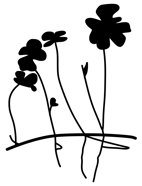Hooks are an example of aerial stem modification.
Important Questions on The Plant: Structure and Function
In Mimosa pudica, thigmotropism helps in protection, whereas in bitter-guard tendrils help in _____.
A) A bud is present in the axil of leaflets of the compound leaf.
B) Casuarina has limited growth of branches as phylloclades.
C) Sub aerial stem of Oxalis spread to new niches when old parts die.
D) Pericarp and seed coat fuse together in caryopsis.
Taeniophyllum, Casuarina, Asparagus, Bougainvillea, Dioscoria, Opuntia, Hibiscus, Chrysanthemum
Students were on the excursion to a botanical garden. They noted the observation given below. Will you be able to help them in understanding those conditions?
There was a green plant with flat stem, but no leaves. The entire plant was covered by soft spines.
The underground stem of some plants such as grasses, strawberry is concerned with
(a) Perennation.
(b) Vegetative propagation.
(c) Moisture absorption.
(d) Food assimilation.
(e) Spread to new niches.
Match the column I with column II and select the correct answer.
| Column I | Column II |
| A Gloriosa | 1 Petiolate tendril |
| B Smilax | 2 Leaf tip tendril |
| C Clematis | 3 Stipulate tendril |
| D Vitis | 4 Apical bud tendril |
| Column-I | Column-II | ||
| a | Stem tendrils | i | Bougainvillea |
| b | Stem thorns | ii | Calotropis |
| c | Opposite phyllotaxy | iii | China rose |
| d | Alternate phyllotaxy | iv | Grapevines |
All the following structures in flowering plants are modified stems except
Select the option that is correct for the description of subaerial modification.
(a) A slender lateral branch arises from the base of the main axis and, after growing aerially for some time, arches downwards to touch the ground.
(b) A lateral branch originates from the basal and underground portion of the main stem, grows horizontally beneath the soil, and comes out obliquely upwards, giving rise to a leafy shoot.
Students were on the excursion to a botanical garden. They noted the observation given below. Will you be able to help them in understanding those conditions?
A wiry outgrowth was seen on a plant arising from in between the leaf and stem.
Match column I with column-II.
| Column-I | Column-II | ||
| a | Stem tendrils | i | Citrus, Bougainvillea |
| b | Stem thorns | ii | Calotropis, guava |
| c | Opposite phyllotaxy | iii | China rose, mustard |
| d | Alternate phyllotaxy | iv | Gourds, grapevines |
Phylloclade |
Cladode |
|
|---|---|---|
| (i) | Both main stem and branches are modified to function like leaves | Only the branches are modified to take over the function of leaves |
| (ii) | Phylloclade has limited or definite growth | Cladode has unlimited or indefinite growth |
| (iii) | It consists of several nodes and internodes | It is usually one inter-node long |
| (iv) | True leaves are commonly caducous | True leaves are either reduced to scales or modified to spines |
| (v) | Examples: , etc | Examples: , etc |
Pick up the wrong differences and select the correct option.
The type of sub-aerial stem modification depicted in the following diagram is present in


